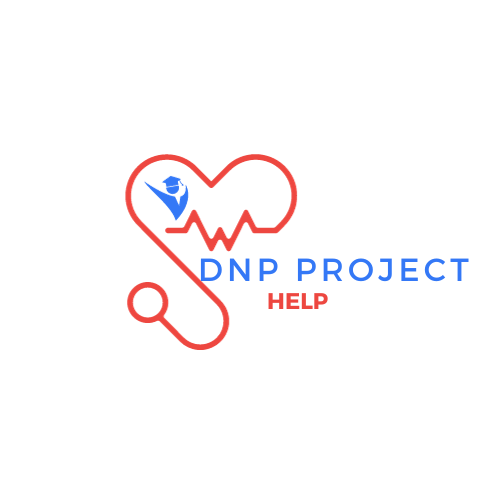
Title: Essentials of Evidence-Based Nursing: Understanding Quantitative Research Designs
Introduction:
To excel in Evidence-Based Practice (EBP) for Nursing Essays and Research Papers, it’s crucial not only to ask the right questions and search for resources but also to assess their value. One way to evaluate resources is by understanding different research designs. This discussion focuses on quantitative research designs, exploring their role in enhancing the quality of studies and aiding in resource analysis during literature reviews.
1. Importance of Quantitative Research Designs:
To find reliable information for EBP, understanding quantitative research designs is key. The course text provides guidelines for critiquing these designs in quantitative studies, aiding in the selection of appropriate research strategies.
2. Discussion Topics:
Choose a topic from the list below and explore two quantitative research studies from the Walden Library:
- Caregiver stress
- Anxiety in children
- Sleep apnea
- Depression in college freshmen
- Rural health care issues
- Post-traumatic stress syndrome
- Traumatic brain injury in veterans
- Health effects of environmental contaminants
- Bipolar disorder
- End-of-life ethical issues
- Alternative medicine
3. Analysis:
For each selected source, identify the quantitative research design used. Evaluate whether the chosen design is the most suitable approach for the research topic. Consider the implications of selecting an inappropriate design for a research study.
4. Resources:
Refer to the required readings in “Nursing Research: Generating and Assessing Evidence for Nursing Practice” by Polit and Beck (2017). Specifically, chapters 8 and 9 focus on planning nursing studies and delve into quantitative research designs, including experimental design, randomization, quasi-experimental design, and observational research.
By engaging in this discussion, you will deepen your understanding of quantitative research designs, enhance your ability to critically assess studies, and contribute to the advancement of evidence-based nursing practices.
Introduction:
This video, produced by Laureate Education, features Dr. Kristen Mauk discussing quantitative research designs and methods related to her Doctorate of Nursing Practice (DNP) project. Dr. Mauk shares insights into how she developed her research design and applied sound quantitative research methods throughout her project.
1. Validity in Quantitative Research Designs:
Validity in research is crucial for ensuring confidence in identifying cause-and-effect relationships. Low validity indicates a flawed research design, rendering results less valuable. This discussion explores four aspects of validity in quantitative research: statistical conclusion validity, internal validity, construct validity, and external validity.
2. Consideration of Validity:
To prepare for the discussion, review Chapter 10 of the course text, focusing on rigor and validity in Evidence-Based Practice Nursing Essays and Research Papers. Examine the method section of one of the following quasi-experimental studies:
- Metheny, N. A., Davis-Jackson, J., & Stewart, B. J. (2010). Effectiveness of an aspiration risk-reduction protocol. Nursing Research, 59(1), 18–25.
- Padula, C. A., Hughes, C., & Baumhover, L. (2009). Impact of a nurse-driven mobility protocol on functional decline in hospitalized older adults. Journal of Nursing Care Quality, 24(4), 325–331.
- Yuan, S., Chou, M., Hwu, L., Chang, Y., Hsu, W., & Kuo, H. (2009). An intervention program to promote health-related physical fitness in nurses. Journal of Clinical Nursing, 18(10), 1,404–1,411.
Identify potential concerns about internal validity in the selected study and consider strategies to strengthen internal validity, reflecting on how it impacts the other types of validity.
3. Consequences of Neglecting Validity:
Reflect on the consequences if an advanced practice nurse overlooks the validity of a research study when reviewing it for potential use in developing evidence-based practice.
By engaging in this discussion, you will deepen your understanding of validity in quantitative research designs and its critical role in maintaining the quality of evidence-based nursing practices.
Resources:
Refer to Chapter 10, “Rigor and Validity in Quantitative Research,” in “Nursing Research: Generating and Assessing Evidence for Nursing Practice” by Polit and Beck (2017). This chapter introduces validity concepts, types, and explores key threats to validity.
Chapter 11
1. Quantitative Research Designs
This chapter explores various quantitative research designs, emphasizing their purposes in research, such as clinical trials, evaluation research, and needs assessments. The focus is on understanding the aim of the research rather than the design itself. The chapter also covers advantages and disadvantages of specific designs. Evidence Based Practice Nursing Essays and Research Papers.
2. Articles for Discussion:
Read articles by Cantrell (2011) and Schultz et al. (2008), which discuss quantitative research designs, their advantages, and potential drawbacks. These articles provide insights into the specific aspects of research designs and their applications.
3. Qualitative Research Designs:
While the past weeks focused on quantitative research, qualitative designs are equally crucial for specific research questions. This discussion emphasizes various types of qualitative research designs, their applications, and their importance in understanding experiences rather than numerical measurements.
4. Discussion Preparation:
To prepare, reflect on Dr. Mauk’s insights on the value of qualitative research in nursing from the media presentation. Then, choose an article from the journal “Qualitative Health Research” published within the last 3 years. Review Chapter 21 in your course text, identify the qualitative research design used in the selected article, and assess its appropriateness. Consider ethical considerations and how using a quantitative design would impact data gathering.
5. Resources for Discussion:
Refer to the required readings for this week, including Chapter 21 of “Nursing Research: Generating and Assessing Evidence for Nursing Practice” by Polit and Beck (2017). Additional articles on ethical challenges (Houghton et al., 2010), phenomenological approaches (Pringle et al., 2011), rigor in qualitative research (Ryan-Nicholls & Will, 2009), theoretical versus pragmatic design (Smith et al., 2011), hermeneutic inquiry (Walker, 2011), critical appraisal of qualitative evidence (Williamson, 2009), and qualitative research positioning (Wuest, 2011) provide valuable insights.
6. Media Presentation:
Watch the video “Qualitative and Mixed Methods Research Designs” featuring Dr. Kristen Mauk. Gain an overview of how qualitative research designs and methods were applied in her doctoral dissertation, understanding the advantages and strategies for enhancing credibility in qualitative or mixed methods research.
By engaging in this discussion, you’ll gain a comprehensive understanding of both quantitative and qualitative research designs, enabling you to make informed decisions in evidence-based nursing practices.
Planning Data Collection for Patient Satisfaction in Healthcare
1. Introduction:
In both quantitative and qualitative research, planning data collection is crucial. Researchers must carefully plan how to gather, report, and store data to ensure reliability and validity. Nurses, when reviewing research for evidence-based practices, should be familiar with sound data collection practices to assess data credibility.
2. Scenario:
Imagine you work as a nurse in a suburban primary care setting serving 10,000 patients annually. Your organization is keen to understand patient perspectives to enhance care. The focus is on assessing patient satisfaction with services, considering factors like ease of access, wait times, staff friendliness, and the likelihood of recommending your organization.
3. Discussion:
Generate questions and plan data collection for a patient satisfaction survey in this scenario. Follow these steps:
- Consider guidelines for question generation from this week’s Learning Resources.
- Formulate at least five questions to evaluate patient satisfaction.
- Reflect on methods or instruments for data collection from Chapters 13 and 23 of the course text.
- Determine suitable methods or instruments for the scenario.
- Establish an appropriate sample size for effective data collection.
4. Table for Data Collection Plan:
| Aspect | Consideration |
| Questions | Formulate at least five questions related to patient satisfaction. |
| Methods/Instruments | Choose appropriate tools for data collection, considering the scenario. |
| Sample Size | Determine an effective sample size based on the characteristics of the patient population and research goals. |
By engaging in this discussion, you will enhance your understanding of planning data collection for patient satisfaction surveys, ensuring that evidence-based practices are grounded in credible and reliable data.
Understanding the Role of Theories and Models in Research
1. Introduction:
In research, theories and models serve as essential tools, providing explanations for observed phenomena and guiding the research process. Researchers utilize existing theories or develop new ones to answer “why” questions and employ models to understand “how” processes occur. This discussion focuses on the significant role of theories and models in research and evidence-based practice.
2. Key Concepts:
Refer to Chapter 6 of the course text, exploring conceptual theories and models in nursing research. Understand how these frameworks serve as foundations for research design.
3. Selection and Exploration:
Select a theory or model of interest from the options presented. Utilize the Walden Library to find a research article that employs the chosen theory or model. Reflect on how the theory or model provides structure to the research study described in the article.
4. Application in Practice:
Consider an issue in your practice area that you’d like to explore through research. Review the media presentation for strategies on identifying a relevant theory or model for a research study.
5. Table for Reflection:
| Aspect | Consideration |
| Selected Theory/Model | Identify and describe the theory or model of interest. |
| Research Article | Provide details of the article found, highlighting how the theory or model was utilized in the research study. |
| Application in Practice | Reflect on how the chosen theory or model could be applied to investigate an issue in your practice area. |
6. Resources:
Utilize the provided resources, including Chapter 6 of the course text, the Walden Library, and the media presentation, to enhance your understanding of the role of theories and models in research.
By engaging in this discussion, you will gain insights into the practical application of theories and models, laying the foundation for meaningful and structured research endeavors in your nursing practice.
By Day 3: Evidence-Based Practice in Nursing
1. Introduction:
For this task, we will summarize an article and explore how a chosen theory or model was applied in the research study. Assessing the value of grounding research in established theories or models is crucial. Below are the details and references:
2. Selected Article Summary:
| Article | Cantrell, M. A. (2011). Demystifying the research process: Understanding a descriptive comparative research design. Pediatric Nursing, 37(4), 188–189. |
| Key Aspects | This article analyzes a quantitative research design used in a specific study. The author delves into the advantages and disadvantages of the design, providing a rationale for its selection. |
| Relevance | Discusses the primary aspects of a quantitative research design. |
| Source | Retrieved from the Walden Library databases. |
3. Application of Theory or Model:
| Selected Theory/Model | Theoretical Frameworks (Chapter 6 of Polit & Beck, 2017) |
| Application in Research Study | The article does not explicitly mention the use of a specific theory or model. However, drawing on Chapter 6, the theoretical framework could have provided a foundation for the study, guiding the research design and analysis. |
| Value Assessment | Basing research on an established theory or model adds structure and coherence to the study. The theoretical framework assists in shaping research questions, selecting methodologies, and interpreting findings. It enhances the study’s credibility and contributes to a deeper understanding of the phenomena under investigation. |
4. References:
- Polit, D. F., & Beck, C. T. (2017). Nursing research: Generating and assessing evidence for nursing practice (10th ed.). Philadelphia, PA: Wolters Kluwer.
- Cantrell, M. A. (2011). Demystifying the research process: Understanding a descriptive comparative research design. Pediatric Nursing, 37(4), 188–189.
- Finn, P. (2011). Critical thinking: Knowledge and skills for evidence-based practice. Language, Speech, and Hearing Services in Schools, 42(1), 69–72.
- Tagney, J., & Haines, C. (2009). Using evidence-based practice to address gaps in nursing knowledge. British Journal of Nursing (BJN), 18(8), 484–489.
By utilizing established theories or models, nursing research gains a solid foundation, promoting evidence-based practice and contributing to the advancement of nursing knowledge.
Must Read:


